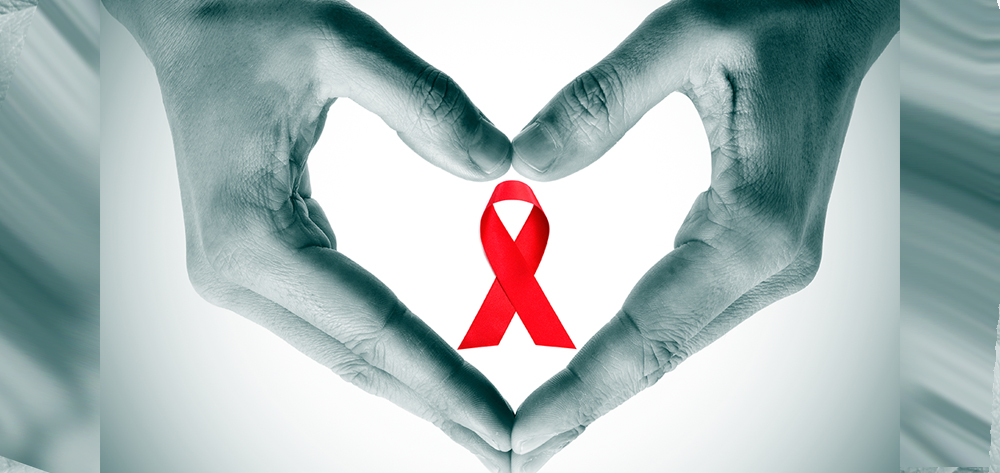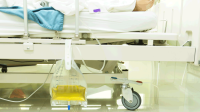There is much to celebrate in the battle against acquired immune deficiency syndrome (AIDS). Antiretroviral therapy (ART) is increasing life expectancy of people with human immunodeficiency virus (HIV) infection to near normal levels. Even more optimistic news was reported at the 2012 International AIDS Conference in Washington, DC. Studies presented at the conference found that treatment of HIV-positive people with ART also can reduce the risk that they will transmit the virus to steady sex partners.
At the same time, the U.S Food and Drug Administration approved the first drug for pre-exposure prophylaxis (PrEP) in 2012. The drug, emtricitabine and tenofovir (Truvada), reduces the risk of sexually acquired HIV in uninfected people. It is used to help prevent HIV infection in those with high-risk behaviors, such as sexual activity with an HIV-infected partner.
Experts are even projecting that the end of the AIDS epidemic is possible. Despite this, it is critical that high-risk populations understand that ART and PrEP are not a cure for HIV infection. They only reduce—not eliminate—the risk of HIV transmission. To be most effective, these drugs still must be combined with safe sex practices, including the proper use of condoms.
The goals of the National HIV/AIDS Strategy (NHAS) are to diagnose new infections and provide effective treatment to reduce the collective community viral load and thus reduce transmission. That does not mean that patient-centered prevention counseling is no longer needed. The following case study illustrates how misinformation combined with complex social and cultural factors can negate the effectiveness of PrEP and other prevention efforts.
James*
James, a 50-year-old gay man, presented to a community health clinic in San Francisco seeking post-exposure prophylaxis (PEP) for a high-risk exposure to HIV. PEP is a 28-day regimen of antiretroviral medication that can prevent HIV infection if started within 72 hours of exposure. This was the second time in the past year that he had sought PEP.
The high-risk event was condom breakage during a sexual encounter with two men. One of the men was known to be HIV positive. James revealed that he normally would not have anal sex with an HIV-positive individual, but he felt pressured into the situation by his primary partner, with whom he had a 14-year relationship.
Further history revealed that his primary partner had been prescribed PrEP. James said that having PrEP had instilled a sense of immunity from HIV infection in his partner. This may have emboldened his partner to find sex partners on the internet, some of whom had sex with both men.
James stated that he always used condoms during sex with men he met on websites. His partner, however, believed that PrEP was all the protection he needed. This may have not been the message that his partner’s physician gave him, yet this was how he interpreted it.
Another reason James gave for his partner’s cavalier attitude about HIV was the fact that his younger partner, unlike himself, had never had a friend who died of AIDS. The result of all these factors was that he had put himself and James at great risk for HIV infection.
James was prescribed PEP for the incident. He was also counseled about HIV prevention and his feelings about his situation. The discussion helped him realize that he needed to change his behavior. He understood that he may not be able to change his partner’s behavior, but he could always use condoms with his partner and avoid having sex with other individuals.
Discussion
James’ case demonstrates the importance of HIV prevention education that addresses an individual’s unique lifestyle, relationships, and understanding of HIV transmission.
The use of PrEP can lead to a false sense of immunity from HIV, called disinhibition. This is a belief that one is “practically immune” to HIV, and therefore, no longer needs to practice safe sex. It is unlikely that the medical provider in this case had advised this, but that was how James’ partner interpreted the information he received.
James’ partner also was unaware or unconcerned that PrEP does not prevent the transmission of other sexually transmitted diseases (STDs). The presence of another STD in either person can greatly increase the risk of transmission of HIV from the receptive to the insertive partner in anal sex. Additionally, it is unknown how compliant James’ partner was with his medication. If he was less than rigorous, he increased the risk of acquiring and transmitting HIV.
The FDA approval of PrEP does not mean that everyone who is at risk of HIV infection is a good candidate for it. Providers must weigh many factors when considering PrEP. Candidates should demonstrate a thorough understanding of HIV transmission. They also must be willing and able to comply with medication, safe sex practices, and regular HIV screening and counseling. Providers also must assess factors that affect medication compliance, including payment source and potential adverse effects of the medication.
Debunking other myths of HIV transmission
James’ case represents the experience of one individual who affected numerous people. Unfortunately, his story is not unique. Many myths about HIV transmission have emerged in the gay community that continue to impact prevention efforts. Two of the most common myths are:
- Reporting an undetectable viral load guarantees a person won’t transmit HIV.
- The insertive partner in anal sex isn’t at risk for infection.
Both these situations may statistically be lower risk than the high-risk behaviors, but they are still risky. For example, an undetectable viral load from 6 months ago may be irrelevant today, especially if a person has missed doses of medication.
James and his partner would have benefited from regular prevention education. Nurses in the community setting are in the perfect position to provide these services, but an accepting and sensitive approach to those in high-risk populations is essential for success. The end of AIDS may be possible, but there is still a long way to go. Nurses who provide patient-centered prevention education will help make that goal a reality.
* Names have been changed.
Stefan Rowniak is assistant professor at the University of San Francisco, School of Nursing and Health Professions. He also works per diem as a nurse practitioner at San Francisco City Clinic, California.
Selected References
AIDS 2012 XIX International AIDS Conference. http://aids2012.org/.
AIDS 2012 XIX International AIDS Conference. AIDS 2012 Ignites Momentum for the Beginning of the End of the AIDS Epidemic. http://www.salutedomani.com/old_article/aids2012_ignites_momentum_for_the_beginning_of_the_end_of_the_aids_epidemic_8877.
AIDS 2012 XIX International AIDS Conference. AIDS 2012 Summary Report. www.aids2012.org/.
National Health Council. Essential Health Benefits White Paper. www.nationalhealthcouncil.org/NHC_Files/files/EHB_WhitePaper.pdf.
Office of National AIDS Policy. National HIV/AIDS strategy. www.whitehouse.gov/administration/eop/onap/nhas/.
Rowniak S, Portillo C. Pre-exposure prophylaxis: an ethical discussion. J Assoc Nurses AIDS Care. 2013;24(1):6-10.
U.S. Department of Health & Human Services. FDA approves first drug for reducing the risk of sexually acquired HIV infection. www.fda.gov/NewsEvents/Newsroom/PressAnnouncements/ucm312210.htm.


















